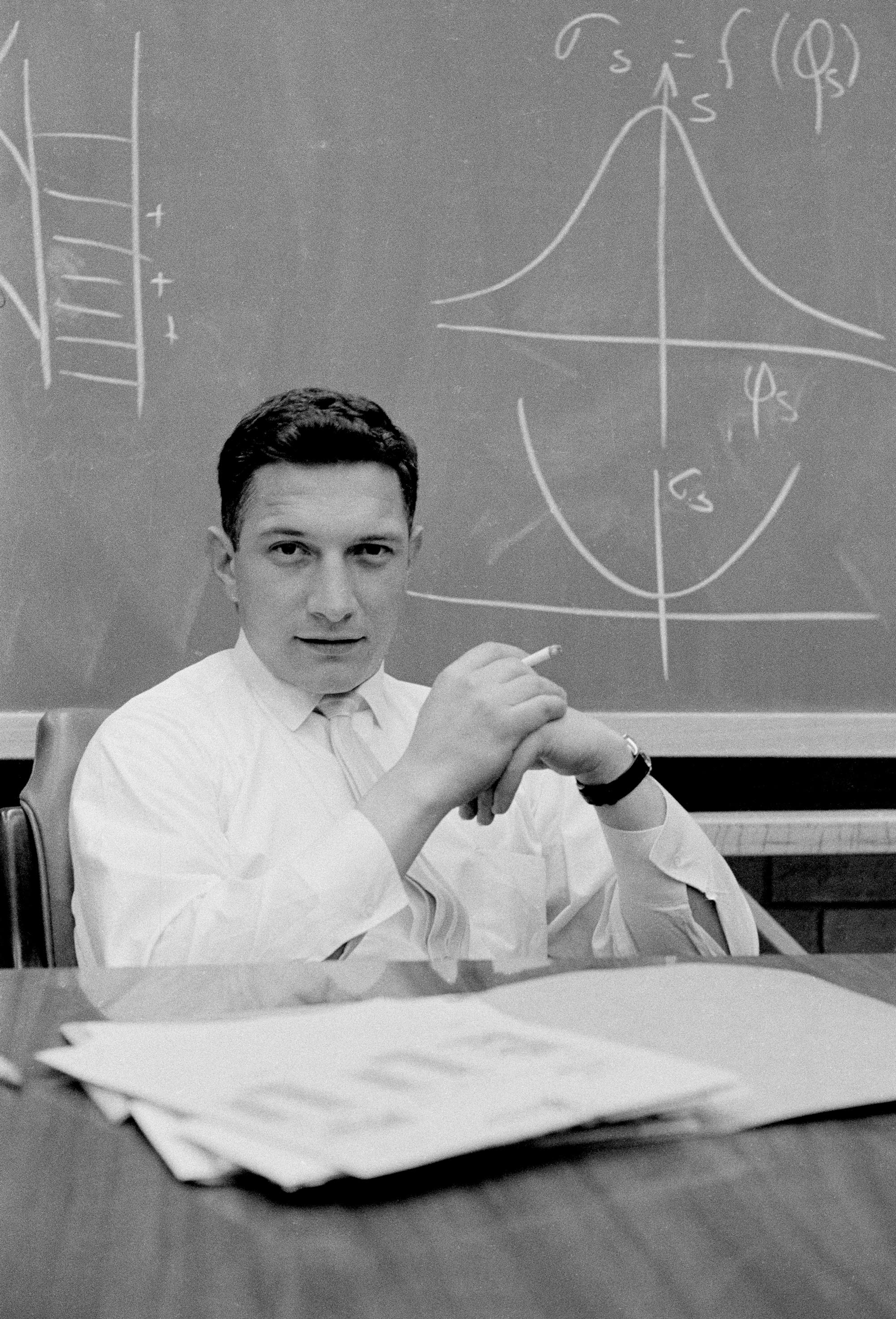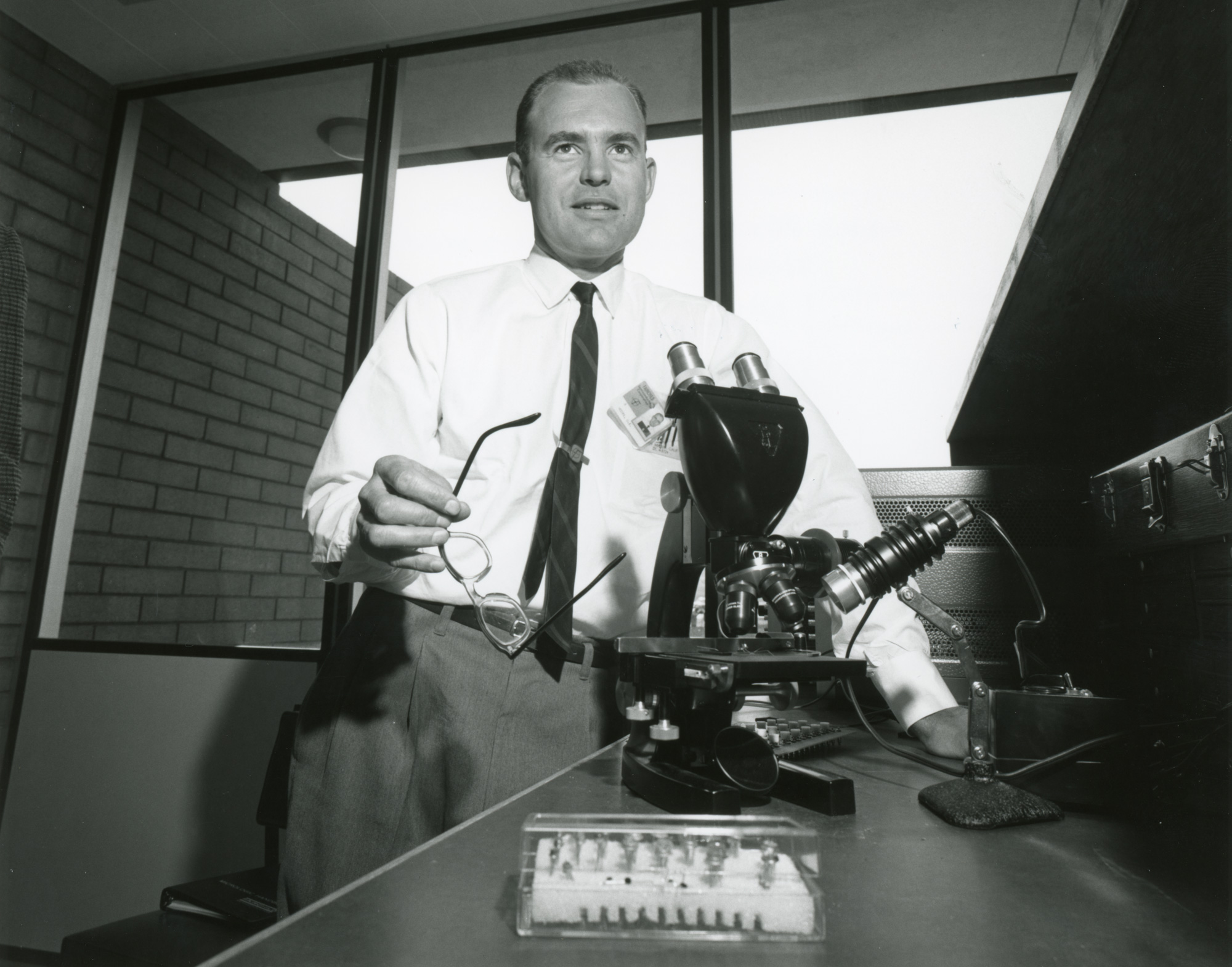Much of the credit for the digital revolution is owed to the early pioneers of Silicon Valley -- from transistor inventor William Shockley and the Traitorous Eight to investor Sherman Fairchild, Intel CEO Andy Grove and microprocessor inventor Ted Hoff. This photo gallery features 12 men whose work and innovations helped to launch the some of the most significant technological advances in history.
-

Physicist William Shockley began his career at Bell Laboratories on the east coast. In December 1947, Shockley, along with colleagues John Bardeen and Walter Brattain, invented the world's first transistor for which they won the Nobel Prize in Physics in 1956. In 1955, Shockley was appointed Director of Shockley Semiconductor Laboratory, a division of Beckman Instruments in the Santa Clara Valley. He hired several of the brightest new PhDs in the country, eight of whom would eventually defect and form their own company, Fairchild Semiconductor. Later in life, Shockley became a professor at Stanford University.
Credit: Associated Press -

Founder of Fairchild Camera and Instrument, Sherman Fairchild invested $1.3 million to start Fairchild Semiconductor in 1957. Aside from his entrepreneurship, Fairchild was an inventor himself. While studying at Harvard University, he invented the camera flash and shutter. He held over 30 patents from silicon semi-conductors to aerial and motion-picture cameras. The over 100 spin-offs from Fairchild Semiconductor between the 1960s and 1980s would come to be known as "Fairchildren." This photo features Fairchild (right) with Robert Noyce (left) and Gordon Moore (center).
Credit: Steve Allen -

William Shockley's autocratic management style did not sit well with many of his employees. In 1957, eight Shockley Semiconductor scientists defected from the company after they were denied their request for the removal of Shockley as manager of Shockley Semiconductor. Shockley felt he had been betrayed, and they would eventually come to be identified as the "Traitorous Eight." Led by physicist Robert Noyce, the scientists started Fairchild Semiconductor.
Credit: Intel -

A native of Iowa, Robert Noyce was introduced to the transistor while studying as an undergraduate at Grinnell College. After finishing his Ph.D at MIT, he began his career at Philco in Philadelphia. In 1956 he moved to California to join William Shockley at Shockley Semiconductor. Along with 7 other employees, Noyce defected from Shockley in 1957 to co-found Fairchild Semiconductor. He invented the microchip in 1961 and went on co-found Intel in 1968.
Credit: Grinnell College, Special Collections and Archives -

Along with Robert Noyce, "Traitorous Eight" member and Chemist Gordon Moore co-founded Intel in 1968. He served as Executive Vice President until 1975 when he became President. In 1965, he authored Moore's Law, observing that every two years the number of transistors on integrated circuits would double, which has remained accurate and is still used by the semiconductor industry in their long-term planning.
Credit: Intel -

When William Shockley arrived in physicist Jay Last's lab at MIT and offered him a job, he immediately decided to switch career plans and began working for Shockley Semiconductor. He joined the Traitorous Eight in 1956 to form Fairchild Semiconductor. In 1961, Last left the company with three others to co-found Amelco Corporation, where he served as Director of Research and Development.
Credit: Magnum Photos -

Born in Switzerland, Jean Hoerni became acquainted with William Shockley after he began working at Caltech in 1952. He worked for Shockley Semiconductor and was among the eight who left to form Fairchild Semiconductor. In 1959, Hoerni patented the planar process, making transistors much more reliable and cost efficient. Along with Jay Last, Eugene Kleiner, and Sheldon Roberts, he co-founded Amelco Corporation in 1961. Hoerni went on to found Union Carbide Electrics in 1964 and Intersil in 1967.
Credit: Magnum Photos -

After Julius Blank returned from serving in the army in WWII, he finished his degree in mechanical engineering and began working for AT&T. In 1956, he and co-worker Eugene Kleiner left to work at Shockley Semiconductor. A member of the Traitorous Eight, Blank was the last of the original eight defectors to leave Fairchild. In 1969, he left to become a consultant and eventually co-founded Xicor, which was sold to Intersil in 2004 for $529 million.
Credit: Magnum Photos -

Sheldon Roberts earned a PhD in metallurgy from MIT and went on to work for Dow Chemical Company. He joined Shockley Semiconductor and chose to defect with the Traitorous Eight to start Fairchild Semiconductor where he served as head of materials. Roberts, along with Jean Hoerni, Eugene Kleiner, and Jay Last, founded Amelco Semiconductor in 1961.
Credit: Magnum Photos -

Victor Grgurinovitch served in WWII and officially changed his surname to "Grinich" to make his name easier to pronounce during military roll calls. He received his PhD at Stanford University and went to work for Shockley Semiconductor. He left the company as a member of the Traitorous Eight and was the only electrical engineer among them. In 1968, he founded Escort Memory Systems and served as a professor at Stanford and Berkeley.
Credit: Magnum Photos -

In 1938, Eugene Kleiner escaped with his family from Austria to New York. Kleiner served in WWII, returned to receive an education, and went to work for Western Electric/AT&T. He moved to California to work for Shockley Semiconductor and defected in 1957 with the Traitorous Eight to start Fairchild Semiconductor. Kleiner was instrumental in obtaining the $1.3 million investment from Sherman Fairchild, and after leaving Fairchild he along with colleagues Jay Last, Sheldon Roberts, and Jean Hoerni founded Amelco Corporation. In 1972, he co-founded a venture capital firm, Kleiner Perkins, an early investor in more than 300 companies including Google, Amazon, and AOL.
Credit: Magnum Photos -

Andrew Grove arrived in New York in 1957 after escaping Hungary during the Revolution of 1956. He earned his PhD in chemical engineering from University of California, Berkeley and began working for Fairchild Semiconductor. Grove joined Noyce and Moore at Intel, assuming the role of Chief Operating Officer. In 1987, he became the company's Chief Executive Officer. During Grove's administration, Intel became the world's 7th largest company, with a value increase of $4 billion to $197 billion.
Credit: Intel -

Intel employee Ted Hoff is credited as the inventor of the first microprocessor, the brain of every digital device we use today. He envisioned a chip that could perform multiple functions after a Japanese calculator company, Busicom, requested that Intel build 12 different integrated circuits for their new calculators. In 1980, Hoff was given the highest technical title at Intel as the first Intel Fellow. He held that position until he left to serve as Vice President for Technology at Atari and later Chief Technical Officer for Teklicon, Inc.
Credit: Intel








